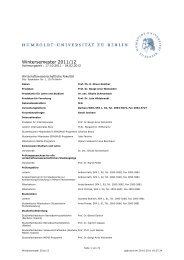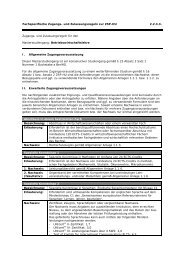Measuring the Effects of a Shock to Monetary Policy - Humboldt ...
Measuring the Effects of a Shock to Monetary Policy - Humboldt ...
Measuring the Effects of a Shock to Monetary Policy - Humboldt ...
You also want an ePaper? Increase the reach of your titles
YUMPU automatically turns print PDFs into web optimized ePapers that Google loves.
26 Bayesian FAVARs with Agnostic Identification<br />
estimated values <strong>of</strong> <strong>the</strong> hyperparameters 26 <strong>of</strong> <strong>the</strong> model, which are obtained with <strong>the</strong><br />
maximum likelihood method. One has <strong>to</strong> treat <strong>the</strong>m as <strong>the</strong>y were <strong>the</strong> true values <strong>of</strong><br />
<strong>the</strong> models nonrandom hyperparameters. This is a disadvantage <strong>to</strong>wards <strong>the</strong> Bayesian<br />
approach where in <strong>the</strong> vein <strong>of</strong> Bayesian data analysis ei<strong>the</strong>r <strong>the</strong> models hyperparameters<br />
and <strong>the</strong> unobserved state vec<strong>to</strong>r are treated as random variables. The classical approach<br />
does not exploit <strong>the</strong> fact that Yt is observed and fur<strong>the</strong>rmore does not exploit <strong>the</strong> structure<br />
<strong>of</strong> <strong>the</strong> state equation in <strong>the</strong> estimation <strong>of</strong> <strong>the</strong> fac<strong>to</strong>rs.<br />
5.2 State-Space Representation<br />
This part elaborates on <strong>the</strong> specific model and <strong>the</strong> required transformations in order <strong>to</strong><br />
estimate <strong>the</strong> model via Gibbs sampling. For more details <strong>the</strong> reader is referred <strong>to</strong> Eliasz<br />
[2005] and Kim and Nelson [1999] for a very good and elaborate survey. In order <strong>to</strong> prepare<br />
(1) and (2) for <strong>the</strong> estimation <strong>the</strong> model has <strong>to</strong> be cast in<strong>to</strong> <strong>the</strong> following state-space form:<br />
⎡<br />
⎢<br />
⎣ Xt<br />
Yt<br />
⎤<br />
⎥<br />
⎦ =<br />
⎡<br />
⎢<br />
⎣ Ft<br />
Yt<br />
⎤<br />
⎡<br />
⎢<br />
⎣ Λf Λy 0 I<br />
⎤ ⎡<br />
⎥ ⎢<br />
⎦ ⎣ Ft<br />
Yt<br />
⎡<br />
⎥<br />
⎢<br />
⎦ = Φ(L) ⎣ Ft−1<br />
Yt−1<br />
⎤<br />
⎥<br />
⎦ +<br />
⎤<br />
⎡<br />
⎢<br />
⎣ et<br />
0<br />
⎥<br />
⎦ + vt<br />
⎤<br />
⎥<br />
⎦ , (7)<br />
The respective variables are <strong>the</strong> same as explained in <strong>the</strong> preceding sections. The<br />
loadings Λ f and Λ y are restricted and identified against rotational indeterminacies as<br />
it has been implemented by BBE and described in <strong>the</strong> previous section. According<br />
<strong>to</strong> BBE <strong>the</strong> inclusion <strong>of</strong> <strong>the</strong> policy instrument Yt in both equations will not change<br />
<strong>the</strong> model, it merely should serve notational and computational simplification. The<br />
Bayesian econometricians treats <strong>the</strong> parameters <strong>of</strong> <strong>the</strong> model, interested <strong>to</strong> do inference<br />
on, as random variables. We are interested in doing inference on <strong>the</strong> parameter space<br />
θ = <br />
Λf , Λy , R, vec(Φ), Q <br />
. Note that vec(Φ) is <strong>the</strong> vec<strong>to</strong>rized finite order conformable<br />
lag polynomial, i.e. Φ is columnwise stacked <strong>to</strong> have a vec<strong>to</strong>rized form 27 . To apply <strong>the</strong><br />
26 Hyperparameters are <strong>the</strong> elements <strong>of</strong> <strong>the</strong> parameter space <strong>to</strong> be estimated<br />
27 for more details about <strong>the</strong> vec opera<strong>to</strong>r please refer <strong>to</strong> Lütkepohl [1993]<br />
(8)




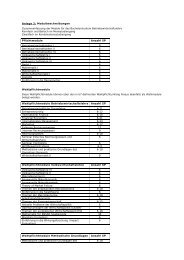

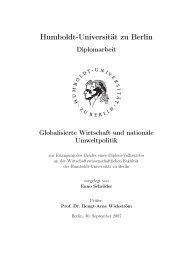
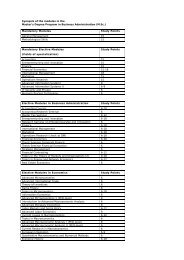
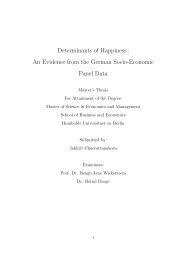
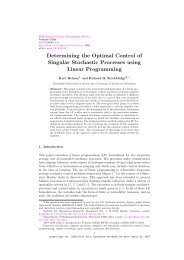
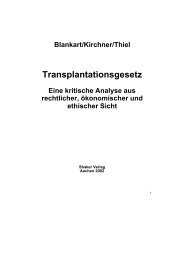
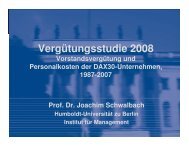

![[Text eingeben] [Text eingeben] Lebenslauf Anna-Maria Schneider](https://img.yumpu.com/16300391/1/184x260/text-eingeben-text-eingeben-lebenslauf-anna-maria-schneider.jpg?quality=85)

